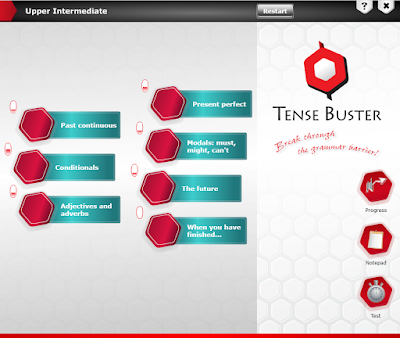Studies: 13% of Museums Worldwide May Not Reopen After COVID-19 Crisis
VOA News|COVID-19 Pandemic
May 18, 2020 11:24 PM (source)
Studies: 13% of Museums Worldwide May Not Reopen After COVID-19 Crisis
研究指出:全球 13% 的博物館在新冠肺炎疫情過後恐無法重新開張
May 18, 2020 11:24 PM
By VOA News
On Monday, International Museum Day, two new studies show that museums are another sector of the world economy that has been significantly weakened by the ongoing COVID-19 pandemic.
According to the studies conducted by UNESCO and the International Council of Museums (ICOM), 90% of museums worldwide were forced to close their doors and stop in-person operations during the crisis. Of the more than 85,000 museums that have closed, an estimated 13% are at risk of never reopening because of the heavy financial losses incurred during this time.
The two studies looked to determine the impact of COVID-19 on museums worldwide and explain how institutions have adapted to the pandemic. UNESCO and ICOM say that they will use this information to find ways to support institutions in the wake of the virus.
They also found that only 5% of the museums in Africa and the Small Island Developing States (SIDS) were able to offer online content to their visitors. Even museums with digital capabilities will face a substantial decrease in income if they are not able to host visitors in person, debilitating their ability to support their employees and continue operations and outreach.
"Museums play a fundamental role in the resilience of societies. We must help them cope with this crisis and keep them in touch with their audiences," said UNESCO Director-General Audrey Azoulay in a press release. "This pandemic also reminds us that half of humanity does not have access to digital technologies. We must work to promote access to culture for everyone, especially the most vulnerable and isolated."
In the U.S. alone, museums are estimated to be losing million a day, according to the American Alliance of Museums. The U.S. arts and culture industry had lost more than .5 billion nationally by early April, according to a survey by Americans for the Arts.
In mid-May, UNESCO plans to begin discussions among international professionals about how to address problems facing museums as part of its ResiliArt movement, which was initially established to support artists affected by the COVID-19 crisis. The first three will center around the situation in the Ibero-American region and will discuss ways to support museums and their staff, according to a UNESCO press release.
"We are fully aware of and confident in the tenacity of museum professionals to meet the challenges posed by the COVID-19 pandemic," said ICOM President Suay Aksoy in a statement. "However, the museum field cannot survive on its own without the support of the public and private sectors. It is imperative to raise emergency relief funds and to put in place policies to protect professionals and self-employed workers on precarious contracts."
In response to the UNESCO study, officials say their response plan includes the social protection of museum staff and the digitization and inventorying of collections. Substantial funds and resources will be required to achieve these goals, UNESCO said.
兩份新的研究於週一(編按:2020 年 5 月 18 日)指出,在新冠肺炎的持續影響下,博物館是世界經濟體(world economy)當中另一個被大大削弱的領域。週一同時是國際博物館日(International Museum Day)。
根據聯合國教科文組織(UNESCO)和國際博物館協會(International Council of Museums,簡稱ICOM)進行的研究顯示,全球有九成的博物館在疫情期間被迫關門及停止實體運作。在超過 8 萬 5000 家已關閉的博物館當中,約有 13% 的博物館因為受到嚴重的財物損失,恐面臨無法重新開張的危機。
這兩份研究想要查出(determine,註 1)新冠肺炎疫情對全球博物館所帶來的影響以及說明這些機構如何適應(adapt,註 2)該流行病所帶來的改變。聯合國教科文組織和國際博物館協會表示,它們會透過這些資訊來尋找在疫情發生之後(in the wake of)能如何支援這些博物館的方法。
該組織和協會也發現,在非洲(Africa)和小島嶼開發中國家(Small Island Developing States,簡稱SIDS)裡,僅 5% 的博物館有能力提供線上內容給它們的訪客。但是即便是具有數位能力的博物館,如果它們無法實體接待訪客也仍然會面臨(face,註 3)重大的(substantial,註 4)收入減少問題。這會進一步影響它們幫助員工、維持營運與拓展業務(outreach,註 5)。
「博物館在社會的恢復上扮演著根本的(fundamental,註 6)角色。我們必須協助博物館應對(cope)這場危機並維持它們跟參觀者之間的聯繫。」聯合國教科文組織總幹事奧黛麗.阿祖萊(Audrey Azoulay)在一則新聞稿中表示。「這場疫情也提醒我們,世界上有半數的人沒有辦法使用數位科技。我們必需把接觸文化的機會推廣給所有人,尤其是最脆弱與孤立的人。」
美國博物館聯盟(American Alliance of Museums)表示,光是在美國(U.S.),博物館每天的損失估計會來到 3300 萬元。而根據美國藝術協會(Americans for the Arts)的一項調查,全美國的藝文產業在 4 月初已損失超過 45 億元。
聯合國教科文組織預計於 5 月中旬在國際專家之間開始討論該如何處理(address,註 7)博物館所面臨的問題。這是該組織「堅韌藝術運動(ResiliArt movement)」中的一環。這項運動最初成立的目的在資助受新冠肺炎疫情影響的藝術家。一份聯合國教科文組織的新聞稿指出,該運動的前 3 場討論將以伊比利美洲地區(Ibero-American region)的境況為主,探討的內容則在如何幫助博物館及其工作人員。
「我們充分意識到博物館專家的堅韌性(tenacity),也對他們面臨疫情挑戰時的應對充滿信心。」國際博物館協會主席蘇埃.阿克索伊(Suay Aksoy,音譯)在一份聲明中說道。「儘管如此,博物館這個領域無法在沒有公家機關和私營部門的幫助下獨自生存。我們迫切的(imperative,註 8)需要籌備緊急紓困基金(emergency relief fund)跟制定政策以保護合約不穩定的(precarious)專業人士和自我雇用(self-employed)人士。」
針對聯合國教科文組織的研究,官方回應表示,它們的應對計畫(response plan)包含博物館工作人員的社會保障(social protection)以及館藏物品的數位化與清點作業。聯合國教科文組織表示,要達成這些目標將會需要大量的資金與資源。
Language Notes
註 1:determine 於本文指「找出,確定,測定;查明」;本字也常指「下決心」
註 2:adapt 於本文指「適應;適合」;本字也常指「改動;改造;改裝;改編」
註 3:face 於本文為動詞,意指「面對,面臨,必須對付(難題)」;本字也常指「正視,承認」或作名詞,意指「臉面,面子;尊嚴」
註 4:substantial 於本文指「大的;可觀的;價值巨大的;重大的」;本字也常指「基本上的;大體上的」;注意重音在第 2 音節
註 5:outreach 於本文為名詞,意指「擴大(醫療或其他)服務範圍,外展服務」;本字也可作形容詞,意指「擴大(醫療或其他)服務範圍的,外展服務的」
註 6:fundamental 於本文指「主要的,根本的」;本字也常指「基礎的,基本的」;注意重音在第 3 音節
註 7:address 於本文為動詞,意指「對付,應付;處理」;本字也常指「對…講話,對…發表演說,致辭」或作名詞,意指「地址;住址」
註 8:imperative 於本文為形容詞,意指「極重要的;緊急的;迫切的」;本字也可作名詞,意指「極重要;緊急;迫切」;注意重音在第 2 音節
BACK TO CONTENT
Check your comprehension!
Choose the BEST answer to each of the questions below. After you finish, highlight the parentheses to reveal the hidden answers.
1. ( D ) According to the article, why might museums remain closed after the pandemic?
(A) Successful virtual tours
(B) Successful online contents
(C) Heavy artwork losses
(D) Heavy financial losses
2. ( C ) According to the article, what will happen to museums if they cannot host visitors in person?
(A) They will look into digitalizing their contents.
(B) They will start hosting visitors online.
(C) Their ability to support employees will be affected.
(D) Their employees will start working from home.
3. ( B ) According to the article, which of the following statements about the ResiliArt movement is INCORRECT?
(A) The movement was launched by UNESCO.
(B) The movement aims to support audiences who cannot visit museums in person.
(C) Professionals will come together to discuss challenges faced by museums.
(D) Professionals will discuss ways to support museums and their staff members.
編譯:外語教學暨資源中心 編輯小組
|

 Read more on VOA.
Read more on VOA.







